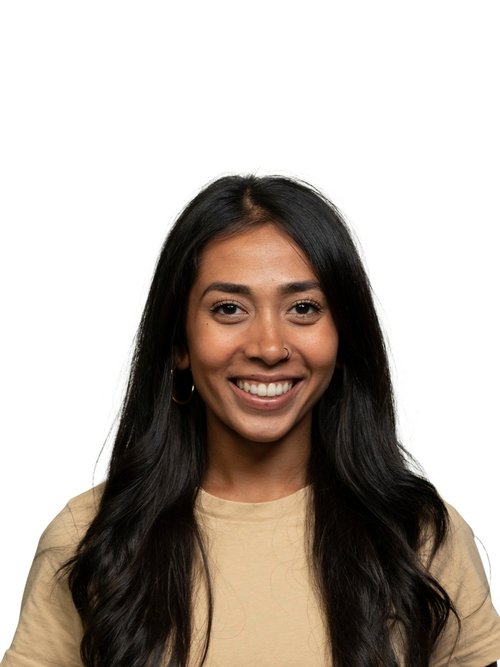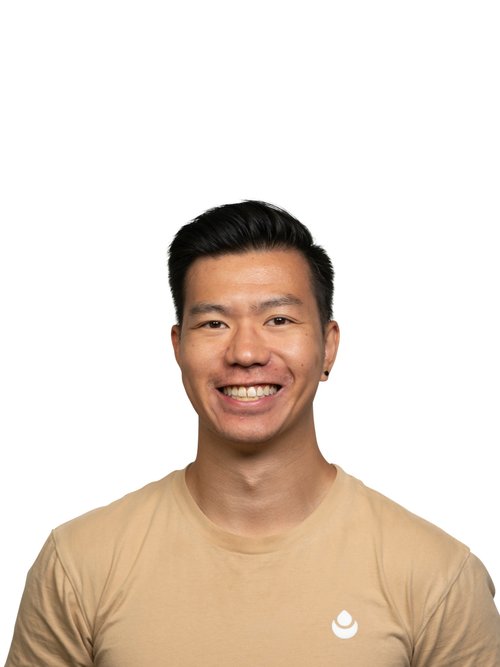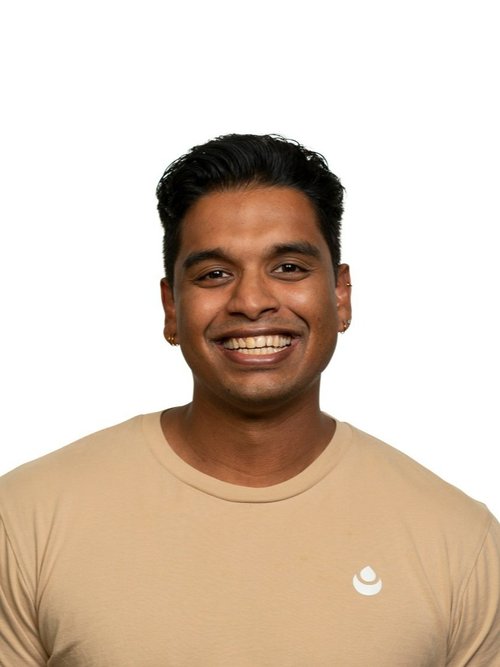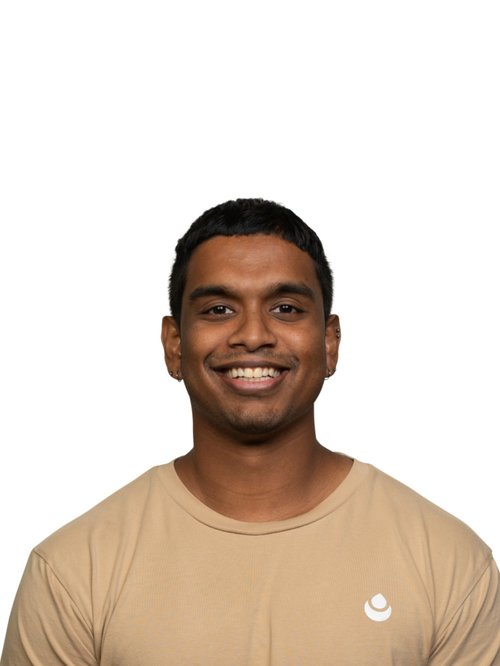Running Injury Treatment Mississauga
Run Pain-Free with AOM!
Home » Our Services » Running physiotherapy » Injury Treatment

Discover Personalized Running Injury Programs
Hear From Our Clients
Stories That Inspire and Motivate.
Fantastic work. I've had years of chronic back pain and issues in my shoulder, wrists and ankles. Also with so much nerve issues I thought I would never be able to conquer my physical limitations and lift weights with no pain. Big shoutout to Justin, Tharaniya, Damian and Thusheinth who I worked with. They were able to help me find the root causes and create solutions to fix them. They also explained what was going on which I found so helpful in understanding the issues.
— Arrun Sathiesh
I came here in August for physio with a work injury of a pulled back which caused sciatica nerve pain.
Justin and Damian did a thorough assessment and helped me to better understand the issues and gave solutions to fix it with physiotherapy and massage. They also gave me stuff to do in the comfort in my house to speed up recovery.
Space Is very clean and welcoming.
I recovered from the back injury and sciatica nerve pain quickly, like real fast. These guys are very knowledgeable, caring and give cool vibes. I HIGHLY recommend them to anyone! Thanks guys!
— Bernard TabiriI'd recommend checking out Art of Mobility for anyone who is looking for a clinic that does much more than your typical rehab/therapy! 5/5 would come back!
— Tony Guo
There are some people who work for a paycheck and some people who will support you as long as you are paying them...and then there are people like the team at AOM
Genuinely passionate about movement and the potential of the body. Using the most effective and accessible interventions to keep athletes and people functioning at their best.
The team is thorough and have always been supportive and accommodating. I was in preparation for Provincial and National level competitions and they made themselves available to help me manage an injury and offer consistent and detailed evaluations and follow up. They are authentically invested in my performance and actively provided in session and out of session communication.
I travel up to 40minutes from my home passing so many other providers because there is a unique perspective and connection with them that is invaluable as an athlete. They are caring honest and interesting in getting me in the form I need to be in to compete.
I have learned so much from Justin, Tharaniya, Damian and Thush and I'm so grateful and blessed to be a client!
— Tracy Arias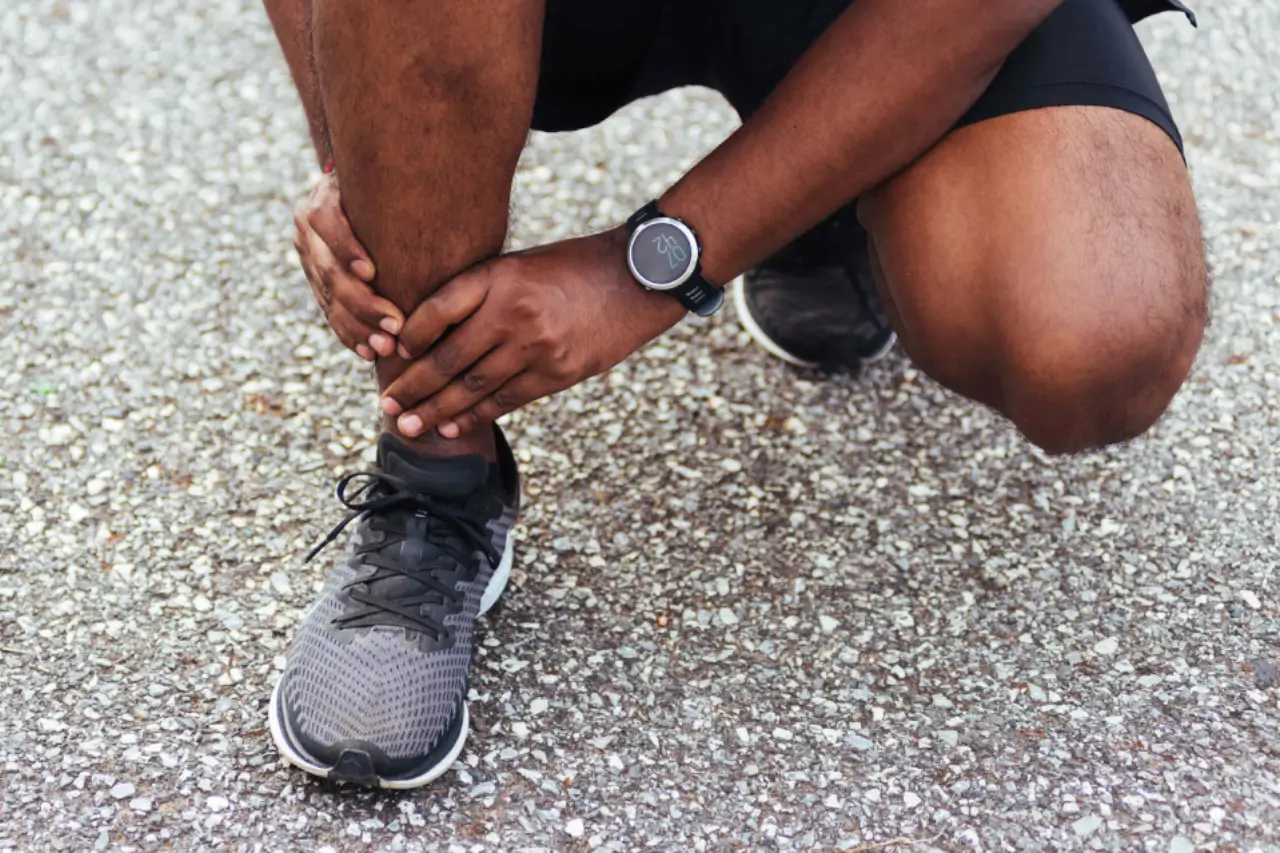
Common Running Injuries Needing Treatment
Immediate Actions for Running Injuries
When faced with a running injury, it’s crucial to respond promptly to prevent further damage and promote healing. The initial response typically involves following the RICE protocol:
- Rest: Avoid activities that exacerbate the pain or discomfort associated with the injury. This may involve temporarily ceasing running or other high-impact activities to allow the affected tissues to heal.
- Ice: Apply ice packs or cold therapy to the injured area to reduce inflammation and alleviate pain. Ice can help numb the area and constrict blood vessels, thereby reducing swelling and promoting faster recovery.
- Compression: Use compression bandages or wraps to provide support and reduce swelling around the injured area. Compression can help minimize inflammation and provide stability, particularly in the early stages of injury.
- Elevation: Elevate the injured limb above the level of the heart whenever possible to reduce swelling and promote circulation. Keeping the injured area elevated can help prevent fluid buildup and expedite the healing process.
In addition to the RICE protocol, it’s essential to avoid aggravating activities and seek professional advice from a physiotherapist or healthcare provider for a proper diagnosis and treatment plan.
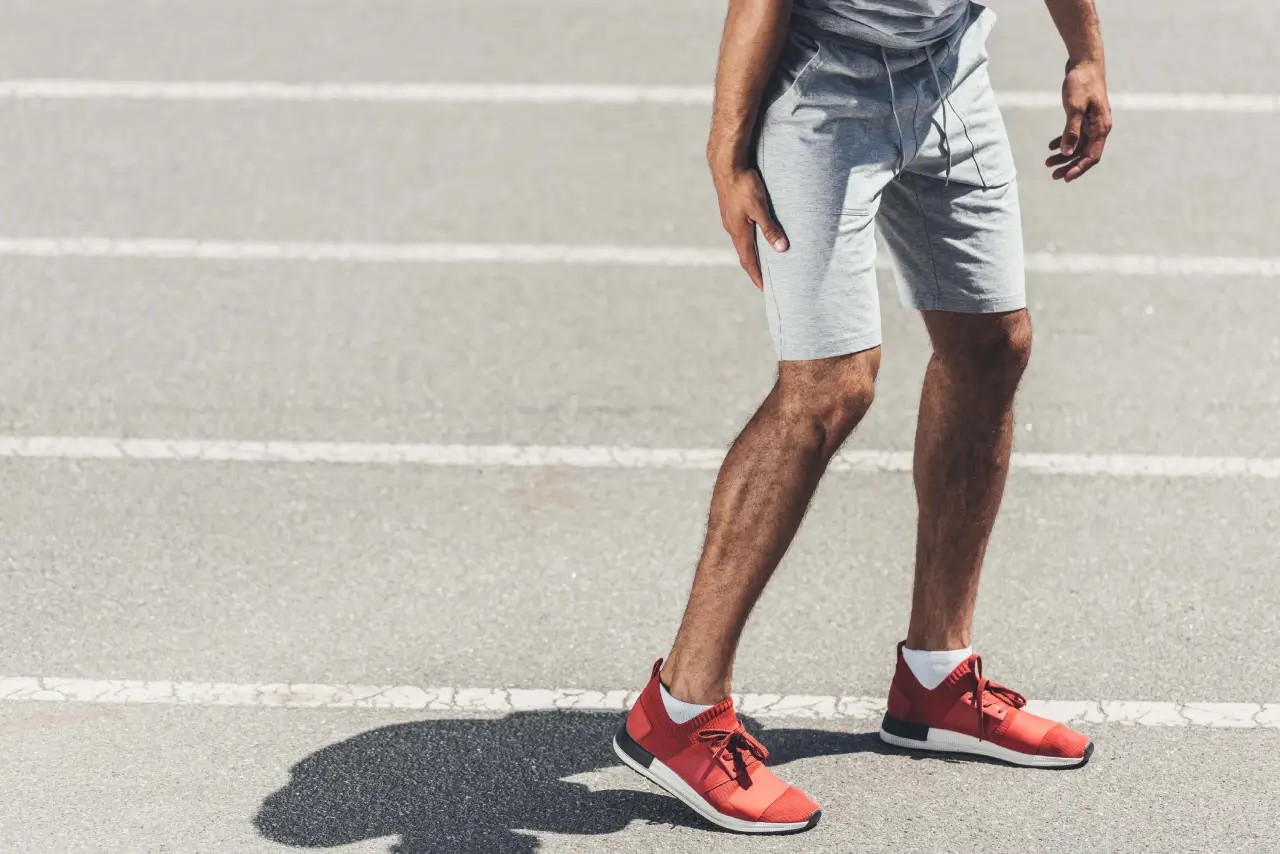

Essential Elements of Running Injury Treatment
Effective treatment of running injuries typically involves a multi-faceted approach tailored to the individual needs and circumstances of the runner. Key components of such treatment may include:
- Correct Diagnosis: Accurate diagnosis is essential for developing an appropriate treatment plan. This may involve a comprehensive assessment of the runner’s medical history, symptoms, and physical examination.
- Individualized Treatment Plan: Once the injury has been diagnosed, a physiotherapist or healthcare provider will develop a personalized treatment plan based on the specific nature of the injury, the runner’s goals, and any underlying risk factors or contributing factors.
- Manual Therapy: Hands-on techniques such as massage, joint mobilization, and soft tissue manipulation may be used to alleviate pain, improve range of motion, and promote tissue healing. Manual therapy can help release tension, reduce muscle imbalances, and restore proper biomechanics.
- Exercise Prescription: Targeted exercises play a crucial role in rehabilitating running injuries and preventing recurrence. These exercises may focus on strengthening weak muscles, improving flexibility, correcting biomechanical issues, and enhancing overall fitness and endurance.
- Education and Self-Management: Providing education and guidance to runners is essential for empowering them to take an active role in their recovery and injury prevention. This may include information on proper running form, footwear selection, training techniques, and strategies for managing symptoms and preventing future injuries.
By addressing each of these components comprehensively, healthcare providers can help runners effectively recover from injuries, regain function and mobility, and return to running safely and confidently.
How Rest Aids in Running Injury Recovery
Rest plays a critical role in the treatment of running injuries by allowing the body time to heal and recover from tissue damage. In the acute phase of injury, rest is often necessary to prevent further aggravation of the injured tissues and promote initial healing.
During this time, it’s essential to avoid activities that exacerbate pain or discomfort and to give the injured area adequate time to rest and recuperate. This may involve temporarily reducing or modifying training activities, such as running, to minimize stress on the affected tissues.
However, it’s important to note that rest does not mean complete immobilization. Maintaining some level of activity and mobility, such as gentle stretching or low-impact exercises, can help prevent stiffness and maintain joint flexibility while promoting circulation and healing.
As the injury progresses from the acute phase to the subacute and chronic phases, the role of rest may evolve. While rest remains important for allowing tissues to heal, gradually reintroducing controlled movement and activity under the guidance of a physiotherapist or healthcare provider is essential for promoting tissue remodeling, restoring function, and preventing deconditioning.
Ultimately, the appropriate balance of rest and activity will depend on the nature and severity of the injury, as well as individual factors such as age, fitness level, and overall health. Working closely with a healthcare provider to develop a personalized treatment plan can help ensure that rest is incorporated effectively into the overall management of the injury.
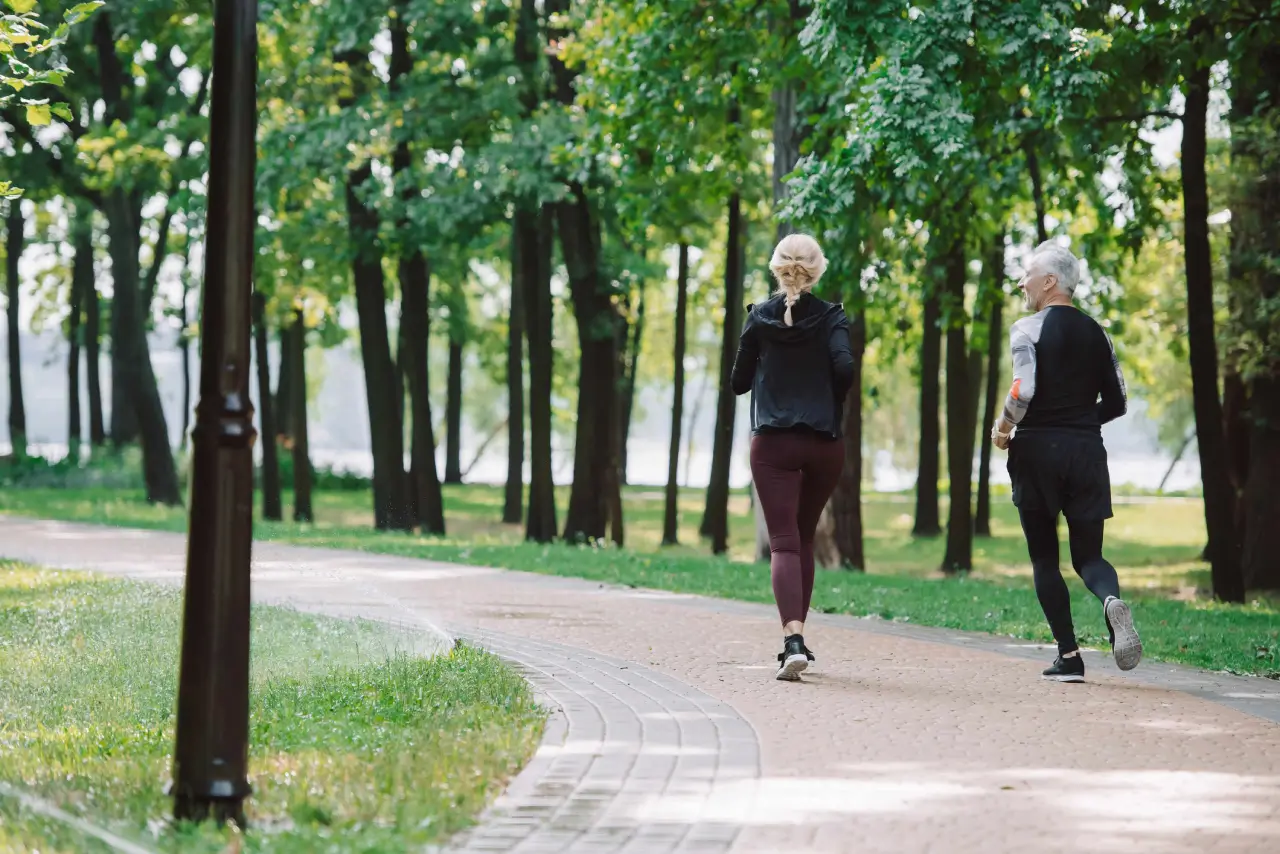

Typical Recovery Time for Running Injuries
The recovery time for running injuries can vary widely depending on several factors, including the type and severity of the injury, individual factors such as age, overall health, and fitness level, as well as adherence to the treatment plan and any underlying risk factors or contributing factors.
In general, minor running injuries may resolve relatively quickly with appropriate rest, rehabilitation, and self-care measures, typically within a few weeks to a couple of months. These injuries may include mild strains, sprains, or overuse injuries that do not involve significant tissue damage or structural changes.
More severe or complex injuries, such as stress fractures, severe ligament sprains, or chronic overuse injuries, may require a more extended period of recovery, ranging from several months to a year or more. These injuries often involve more significant tissue damage, structural changes, or underlying biomechanical issues that require comprehensive rehabilitation and management.
It’s important to note that recovery time is highly individual and can vary based on numerous factors, including the specific circumstances of the injury, the effectiveness of treatment, the presence of any complicating factors, and the runner’s commitment to rehabilitation and self-care.
Working closely with a physiotherapist or healthcare provider throughout the recovery process can help ensure that progress is monitored, treatment is adjusted as needed, and the runner is supported in returning to running and other activities safely and effectively.
Rehabilitation Exercises for Running Injuries
- Stretching Exercises : Stretching exercises can help improve flexibility, reduce muscle tension, and alleviate stiffness associated with running injuries. Focus on stretching tight or shortened muscles that may be contributing to pain or dysfunction, such as the calf muscles, hamstrings, quadriceps, and hip flexors.
- Strengthening Exercises : Strengthening exercises are essential for rehabilitating running injuries and preventing recurrence. Target muscles that may be weak or imbalanced, such as the muscles of the hips, core, and lower extremities, to improve stability, control, and alignment during running and other activities.
- Balance and Proprioception Exercises: Balance and proprioception exercises help improve neuromuscular control, coordination, and proprioceptive awareness, which are important for maintaining stability and preventing falls and injuries. Incorporate exercises that challenge balance, such as single-leg stance exercises or balance board exercises, to enhance proprioception and joint stability.
- Functional and Sport-Specific Exercises: Functional and sport-specific exercises aim to replicate the movement patterns and demands of running while progressively loading tissues and joints to promote adaptation and tissue remodeling. These exercises may include activities such as dynamic lunges, step-ups, plyometric drills, and running drills, tailored to the individual needs and goals of the runner.
- Cardiovascular Conditioning: Maintaining cardiovascular fitness is essential for overall health and well-being, as well as facilitating recovery from running injuries. Incorporate low-impact cardiovascular activities such as swimming, cycling, or aqua jogging to maintain or improve cardiovascular fitness while minimizing stress on injured tissues.
- Gradual Progression: When incorporating exercises into a rehabilitation program, it's important to start gradually and progress systematically over time. Begin with low-intensity exercises and gradually increase the intensity, duration, and complexity as tolerated, under the guidance of a physiotherapist or healthcare provider.
Measures to Avoid Running Injury Recurrence
- Comprehensive Assessment : Undergo a comprehensive assessment by a physiotherapist or healthcare provider to identify any underlying biomechanical issues, muscle imbalances, or movement patterns that may increase the risk of injury.
- Individualized Training Plan : Develop an individualized training plan tailored to your specific needs, goals, and fitness level. Gradually increase training volume, intensity, and duration to avoid overloading tissues and minimize the risk of overuse injuries.
- Proper Warm-up and Cool-down: Perform a dynamic warm-up before running to prepare the body for activity and reduce the risk of injury. Incorporate dynamic stretches, mobility exercises, and activation drills to increase blood flow, improve flexibility, and activate key muscle groups. Following a run, engage in a cool-down routine consisting of static stretches and foam rolling to promote muscle recovery and flexibility.
- Strength Training: Include strength training exercises targeting key muscle groups involved in running, such as the hips, core, and lower extremities. Focus on exercises that improve muscular strength, endurance, and stability, as well as addressing any muscle imbalances or weaknesses that may contribute to injury.
- Cross-Training: Incorporate cross-training activities such as swimming, cycling, or strength training to provide variety in your workouts, reduce repetitive stress on the body, and improve overall fitness and conditioning.
- Proper Footwear and Equipment: Wear appropriate footwear that is suited to your foot type, running gait, and training surface. Replace running shoes regularly to ensure adequate cushioning and support. Consider using orthotic inserts or other supportive devices if necessary to address biomechanical issues or foot imbalances.
- Listen to Your Body: Pay attention to warning signs of overuse or impending injury, such as persistent pain, discomfort, or changes in running form. If you experience any symptoms of injury, modify your training, seek professional advice, and take appropriate steps to address the issue before it progresses. Wear appropriate footwear that is suited to your foot type, running gait, and training surface. Replace running shoes regularly to ensure adequate cushioning and support. Consider using orthotic inserts or other supportive devices if necessary to address biomechanical issues or foot imbalances.
- Rest and Recovery: Incorporate rest days and recovery periods into your training schedule to allow the body time to adapt, repair, and regenerate. Adequate rest and recovery are essential for preventing overtraining, fatigue, and injury.
Take the First Step Towards Injury-Free Running Today!
Mississauga Finest: Meet Our Running Analysis Team
Click to follow Colby @Colbyngg
Hi, my name is Colby Ng and I am a chiropractor and completed my Doctor of Chiropractic at the Canadian Memorial Chiropractic College. I also completed my Bachelor of Kinesiology from the University of Toronto.
I have been in sports and athletics my whole life, which has pushed me to have big goals. I have my eyes set on many crazy things and know how important it is to have people that can help you do the things that matter most. While reaching my dreams mean a lot to me, I have also been lucky enough to share the joy of other people’s accomplishments. Knowing that I played a small part in helping someone reach their fitness, health, or life goals has empowered me more than I ever thought it would.
I believe that my role as a chiropractor goes beyond providing pain relief. I like to use a combination of manual techniques like deep tissue release, mobilizations, adjustments, and acupuncture to relieve the discomfort. Pairing this with exercises and rehabilitation allows me to provide the long-term relief needed to get you on track towards your goals.
When I am not in the clinic, you will find me chasing my own dreams in the weight room, on the road, on the trail, and on the climbing wall. Right now, I have my eyes set on qualifying for Boston, doing my first Ironman, and planning my next multi-day trek.Click to follow Ushwin @Ushwin
Ushwin Emmanuel, MScPT, BScKin
Hi! I’m Ushwin, I am a Physiotherapist and group fitness trainer with a deep passion for health, fitness, and helping individuals regain and take back control of their health. My educational journey began with an Honours Bachelor of Science in Kinesiology at McMaster University. Subsequently, I continued my academic pursuit at the University of Toronto, where I finished my Master’s of Science in Physical Therapy.
It was during my undergraduate degree that a misdiagnosed sports injury and an ACL tear ignited my desire to pursue physiotherapy. I understood firsthand how it felt to be a patient, which has fueled my empathy and determination to help others overcome similar challenges.
Beyond my clinical pursuits, I have been an Orangetheory Coach group fitness coach for the past two years. Witnessing the progress and dedication of members in group classes has been truly inspiring. In this role I have developed my ability to address imbalances and provide options to participate in fitness, regardless of one’s fitness capabilities.
I bring a wealth of experience, including working with the Toronto Marathons for the past two years as a physiotherapist in the emergency medical tent. This hands-on experience has given me a unique perspective on injury management and experience with acute running injuries. Additionally, I worked with university level varsity athletes in Football, Tennis and Soccer where I provided therapy prior to games/practices and delivered emergency sideline athletic therapy during games/practices at McMaster. This experience has honed my skills in on-the-spot injury assessment and care.
Outside of the clinic and coaching, you’ll often find me pursuing a balanced and active lifestyle. Whether I’m on the volleyball court, soccer field, dancing to music, or unleashing my creativity as a DJ mixing music, I embrace every opportunity to stay active and express myself.
I’m eager to join you on your journey to optimal health and well-being. Please don’t hesitate to reach out, schedule an appointment, or share your own wellness stories with me. Together, we’ll work towards a healthier, happier you.
Justin Achat, MScPT, BScKin
Hi, my name is Justin Achat and I am a Physiotherapist who completed my Masters in Physical Therapy from Queens University and my Bachelors in Kinesiology and Health Science from York University. Prior to completing my Masters degree, I worked for nearly a decade as a Registered Kinesiologist and as a CSEP Certified Exercise Physiologist.
From helping athletes prepare for combines, to prescribing target heart rate zones for patients in cardiac rehab, I’ve always maintained that exercise is medicine. While I enjoyed helping others reach their fitness goals for years, I felt compelled towards entering the profession of Physiotherapy after hearing countless first hand accounts of injuries being mismanaged, and how it negatively impacted personal narratives of self worth and capability.
Since becoming a physio, I’ve continued to leverage my passions for empowering others through education and exercise, while committing to the better understanding of every patients unique story. In clinic, I offer patients a blend of: education, manual therapy, electro acupuncture and therapeutic exercise that ranges from common sense principles, to optimizing complex movement patterns.
As we work closely together to curate your specific rehab goals, I commit to helping you restore function, achieve wellness, and to gain healthy perspectives in the process. Out of clinic, you’ll find me working out in the gym, on the soccer field, likely in a bunker on the golf course, or riding the chairlift after a fresh snowfall!
Click to follow Tharaniya @Barbellerehab
Tharaniya Sivarajah, MScPT, BScKin, CPT
Hi, my name is Tharaniya! I am a Physiotherapist Resident and certified personal trainer (CPT) with the Canadian Society of Exercise Physiology. I finished my Masters in Physical Therapy at Brunel University.
I place great importance in fostering independence among the individuals that I work with for long-term success.
Exercise, strength training in particular, is my foundation and I hope to seamlessly transition my clients from rehab to strength and conditioning. I believe that as humans, you are all resilient, adaptable, and stronger than you think. Ultimately, my goal is to listen to, educate and empower my clients.
Click to follow Christian @Christiantabula
Hello! My name is Christian Tabula, and I am a Registered Massage Therapist. I graduated at the top of my class from ICT Kikkawa College and hold an Honours BSc in Kinesiology from Wilfrid Laurier University.
I grew up being physically active and a devoted sports fan. This contributed to my eagerness to learn more about the science behind movement. Quickly I became passionate about movement and manual therapy and their effects on the functioning of the human body. Pursuing a career in massage therapy was a perfect way for me to further expand and share my knowledge to help others. My goal is to educate you on the reasoning behind what you are dealing with, and to put you back in control of your body, whether you want to relax or fix nagging pain or injuries.
Being active has always been a significant part of my life. From playing competitive sports to exercising in the gym, I understand the importance of physical activity, recovery, and their impact on our overall health and performance. With the right guidance, massage therapy can play a crucial role in this process. Specializing in injury rehabilitation, I have had the privilege of working with professional and high-level athletes from various disciplines, helping them achieve peak performance and optimal recovery.
Committed to professional growth, I regularly engage in continuing education courses to provide the most up-to-date treatments. This allows me to develop tailored treatment plans that combine manual therapy and exercise, addressing the unique needs and goals of each individual. Whether you are an avid lifter, a high-level athlete, or simply seeking relief from everyday stresses and injuries, I am here to help.
As your massage therapist, my philosophy centers around education and empowering you with the tools to take control of your body and continue doing what you love. Together, we can enhance your health and wellness journey. I have a particular interest in working with weightlifters and athletes, addressing foot pain, managing acute and chronic pain, and assisting runners in achieving their best performance.
Click to follow Tanisha @Santai_health
Dr. Tanisha Shekdar, Bsc, MSc, ND
Hi and welcome! My name is Tanisha Shekdar and I’m a Naturopathic Doctor. I completed my masters in biotechnology from UofG and I received my doctor of naturopathic medicine degree from The Canadian College of Naturopathic medicine.
I struggled with digestive and skin issues all my life. Sinus infections and dealing with IBS issues was constant for me growing up; not to mention, I was put on antibiotics at least twice a year throughout undergrad. It was when I got shingles at the end of undergrad that things really took a turn for the worse. I felt so alone and hopeless with how I was feeling. I wish someone had told me all the things I have come to learn now about. For me, everything changed when I started pinpointing my food triggers, supporting my immune system, and really understanding how the gut-brain connection which started improving my bloating, mental fog, fatigue, and anxiety. Now, thanks to my experiences and education I can really understand how important stress management, sleep, and diet is to an individual’s physical, mental and emotional health.
I’m a strong believer in educating others which is why one of naturopathic medicine’s philosophies resonates so well with me – Docere literally translates to doctor as teacher. My goal is to empower my clients and provide them with all the knowledge in order to not not only help them feel their best but also to provide them with the tools in order for them to take control of their health!
When I’m not in the clinic, you can find me gardening, prepping for my next fitness competition, experimenting to create the next best gut friendly snack, and planning my next travel adventure!
Hi and welcome! My name is Tanisha Shekdar and I’m a holistic health nutritionist. I completed my masters in biotechnology from UofG and I’m about to receive my doctor of naturopathic medicine degree from The Canadian College of Naturopathic medicine.
I struggled with digestive and skin issues all my life. Sinus infections and dealing with IBS issues was constant for me growing up; not to mention, I was put on antibiotics at least twice a year throughout undergrad. It was when I got shingles at the end of undergrad that things really took a turn for the worse. I felt so alone and hopeless with how I was feeling. I wish someone had told me all the things I have come to learn now about. For me, everything changed when I started pinpointing my food triggers, supporting my immune system, and really understanding how the gut-brain connection which started improving my bloating, mental fog, fatigue, and anxiety. Now, thanks to my experiences and education I can really understand how important stress management, sleep, and diet is to an individual’s physical, mental and emotional health.
I’m a strong believer in educating others which is why one of naturopathic medicine’s philosophies resonates so well with me – Docere literally translates to doctor as teacher. My goal is to empower my clients and provide them with all the knowledge in order to not not only help them feel their best but also to provide them with the tools in order for them to take control of their health!
When I’m not in the clinic, you can find me gardening, prepping for my next fitness competition, experimenting to create the next best gut friendly snack, and planning my next travel adventure!

Martin Wong, MSc., B.Eng.
Hi, my name is Martin Wong and I am Strategy and Marketing Advisor here at AOM! I am involved in everything from branding and marketing to website design and maintenance. I have a Bachelor’s of Engineering from McMaster University and a Master’s of Science from the University of Toronto.
As the Marketing Coordinator, I draw on my experiences as an active (amateur) athlete and from the injuries and treatments I have gone through personally to communicate our AOM approach and ethos to clients. In doing so, my goal is that all current and future clients come out of their AOM experiences not only physically better but also more knowledgeable of their own bodies – enabling them to live their best and most active lifestyle.
When I am not reviewing or developing strategic directives for AOM, you can find me playing organized soccer or volleyball, hiking at far away places, or lifting weights. Outside of that, I also consult with organizations, both private and public, national and multinational, on their sustainability/ESG strategies and disclosures.
Click to follow Justin @Just.jmah
Justin Mah, MScPT, BHSc
Hi, my name is Justin Mah, and I am a physiotherapist and performance coach who completed my Masters in Physical Therapy degree from the University of Toronto and BHSc in Biomedical Science from Western University.
Exercise has always been an important aspect of my life as an avid weightlifter, hockey, and yoga athlete. During my younger years, I suffered social anxiety and found it difficult transitioning into high school – exercise and weight training became the outlet to allow me to work on myself and improve my mental health. When I suffered a severe shoulder injury during undergrad that prevented me from working out, I felt like I lost a piece of who I was – I thought I would live with this for the rest of my life. Having gone through this process, I understand what it means to feel like you’re broken. I understand what it means to feel like you lost your way of life, and because of this I made a commitment to help others not suffer in the same way I did. This is my WHY when I made the decision to become a physiotherapist.
My mission is simple – to provide you with the tools to take care of your own body – we only have one body in this life, and my goal is to empower and educate you on this life-long journey. I use a combination of manual therapy, electro-acupuncture, and strengthening and mobility exercise to create a personalized plan of care for you to reach your goals.
When I’m not in the clinic, I’m usually doing any activity related to food – cooking new recipes, trying new restaurants, or experimenting with new smoothies for our smoothie bar. I’ve recently started attending fitness classes at OrangeTheory Fitness, and am learning how to stand up paddleboard (SUP) on the lakefront behind our clinic!
Click to follow Thusheinth @Thush.siv
Hi, my name is Thusheinth Sivarajah and I am a Physiotherapist and Certified Personal Trainer who completed his Master’s in Physical Therapy program at Queen’s University.
Once you get to know me, you’ll realize that there is never a dull moment when you work with me. I am devoted to getting you back to doing what you love while making sure you are having fun during the journey. As an avid weightlifter, martial artist, and volleyball athlete, I have experienced all types of injuries myself – ranging from a common strain to some very severe injuries. These injuries have helped me greatly empathize with my clients, understanding the importance of active rehab for long-term results.
My goal is to make sure every person I work with gets an active solution and is educated and empowered throughout the process. By using a blend of manual therapy (hands-on care, without machines), mobility, and strengthening exercises, I am committed to finding the right treatment approach tailored for you.
When I am not in the clinic, you can find me working out at the gym, doing group fitness classes, walking my dog, or on a court (playing some basketball or beach volleyball).
Click to follow Sonica @Prj.soleil
Hiiieee Friends! My name is Sonica and I have been practicing Yoga for 10 years with a background in Kinesiology and Health Promotions! My journey to becoming a yoga teacher wasn’t easy. I suffered a series of injuries that left me with limited mobility and chronic pain.
Seeking a way to stay active and support my body’s recovery, I turned to yoga as a form of rehabilitation not just for my physical recovery, but for my mental recovery as well. Yoga provided a community and support system that I didn’t even know I needed, but became a huge part of my recovery. Through practice and my understanding of strength and conditioning training, I was able to redefine what movement and activity looked like for me as I discovered and explored my love for yoga.
My classes are rooted in my passion to build community and hold space for women who are exploring, redefining, or deepening what wellness and movement look like to them. I encourage my students to approach their practice with curiosity, play, and compassion as a way to deepen the relationship and connection between their mind and body.
When I’m not teaching yoga, I enjoy staying active through activities such as running, weightlifting, and trying out various fitness classes. Additionally, I have a passion for travel and indulging in diverse cuisines.
Click to follow Nikki @holistnik
Get ready for an exhilarating journey towards holistic wellness with me by your side. My passion for wellness stems from a profound belief in the innate ability of our bodies to heal naturally and thrive. After experiencing the power of holistic approaches firsthand, I embarked on a journey to become a holistic nutritionist, driven by the desire to empower others to embrace their well-being.
My journey into holistic health began shortly after having my first child. Motivated by a deep sense of responsibility to lead by example for fellow moms in the community, I pursued education in holistic nutrition and became a certified Pre & Postnatal Coach. I am dedicated to guiding others towards optimal health through nourishing food choices, lifestyle adjustments, and holistic practices.
Whether you’re seeking to optimize your nutrition, recover from injury, or simply enhance your overall wellness, I am committed to supporting you every step of the way. Together, we’ll embark on a journey towards holistic health that’s both enriching and empowering, ensuring that you not only reach your goals but also enjoy the process along the way.
My mission is to empower moms and moms-to-be on their journey to holistic wellness through personalized holistic nutrition and strength coaching. When it comes to holistic nutrition, my approach goes beyond mere dietary guidelines – it’s about nourishing your mind, body, and soul. I believe in crafting a unique eating plan that aligns with your individual health needs and overall well-being, recognizing that there’s no one-size-fits-all solution. Together, we’ll explore how to fuel your body in a way that promotes vitality, energy, and balance.
In my strength coaching practice, I’m dedicated to providing active solutions that prioritize your education and empowerment. By integrating breathing techniques, mobility work, and tailored strength exercises, I strive to create a treatment plan that’s specifically designed for you. Whether you’re looking to build strength during pregnancy, recover postpartum, or simply enhance your physical well-being as a mom, I’m committed to guiding you towards your goals with expertise, compassion, and personalized care.
When I am not in the clinic, you can find me walking outside with my kids & dog, working out, finding a new bakery, or in the kitchen with my daughter trying a new recipe!
Click to follow Thurginth @Gin.siv
Thurginth Sivarajah, HBA, CPT
My focus is to educate and empower you, so you can get back to living a life doing the things you enjoy the most.
During my spare time, you can catch me doing martial arts, lifting weights, or having his friends and family over for game night.
Insurance Partners
At AOM, we proudly collaborate with major insurance providers to serve you better. Contact us to learn more!
- Great West Life
- Sun Life
- Manulife
Areas We Serve
At AOM, we proudly collaborate with major insurance providers to serve you better. Contact us to learn more!
- Mississauga
- Port Credit
- Clarkson
- Erindale
- Square one
- CF Sherway gardens
- Cooksville
- Mineola
- Lakeview
- Dixie
Art of Mobility
Address: 125 Lakeshore Rd E #202, Mississauga, ON L5G 1E5, Canada
Phone: (647) 695-3995
Email: team@artofmobility.com
Open Hours:
Mon – Sun: 10 AM – 10 PM






